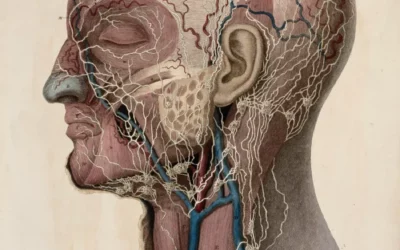What is Functional Analytic Psychotherapy (FAP)?
Functional Analytic Psychotherapy (FAP) is an innovative and intensive form of talk therapy that emphasizes the power of the therapeutic relationship to create meaningful change in clients’ lives. Developed in the late 1980s, FAP is rooted in behaviorism and focuses on in-the-moment interactions between therapist and client as a microcosm of the client’s broader relational patterns.
At its core, FAP posits that many psychological problems stem from interpersonal difficulties that manifest in the therapy room. By identifying and addressing these issues as they occur in real-time, therapists can help clients develop more adaptive ways of relating to others, ultimately leading to improved mental health and well-being.
Is Functional Analytic Psychotherapy Evidence-Based?
Yes, Functional Analytic Psychotherapy has garnered a growing body of empirical support since its inception. While not as extensively researched as some older therapeutic modalities, FAP has demonstrated promising results in several studies:
- A 2017 meta-analysis by Mangabeira et al. found that FAP interventions were associated with moderate to large effect sizes in improving interpersonal functioning and reducing psychological distress.
- Maitland et al. (2016) conducted a randomized controlled trial comparing FAP to cognitive-behavioral therapy (CBT) for social anxiety disorder. Results showed that FAP was equally effective as CBT in reducing symptoms, with some evidence suggesting superior outcomes in interpersonal functioning.
- A 2019 study by Holman et al. explored the effectiveness of FAP for treating depression, finding significant reductions in depressive symptoms and improvements in social connectedness.
While more research is needed to solidify FAP’s evidence base, particularly in comparison to other established therapies, the existing literature supports its efficacy in addressing a range of psychological issues, especially those with strong interpersonal components.
Who Created Functional Analytic Psychotherapy?
Functional Analytic Psychotherapy was developed by Dr. Robert J. Kohlenberg and Dr. Mavis Tsai at the University of Washington in Seattle. Their collaborative work in the late 1980s and early 1990s laid the foundation for this innovative approach to psychotherapy.
Dr. Robert J. Kohlenberg’s Biography
Dr. Kohlenberg received his Ph.D. in Clinical Psychology from the University of California, Los Angeles, in 1968. His early career focused on behavioral approaches to treating anxiety and depression. As a professor at the University of Washington, Kohlenberg became increasingly interested in the therapeutic relationship’s role in facilitating change.
Dr. Mavis Tsai’s Background
Dr. Tsai earned her Ph.D. in Clinical Psychology from the University of Washington in 1982. Her clinical work and research initially centered on cognitive-behavioral interventions for mood disorders. Tsai’s interest in integrating relational and behavioral perspectives led to her collaboration with Kohlenberg.
How Was Functional Analytic Psychotherapy Developed?
The development of FAP was a gradual process that emerged from Kohlenberg and Tsai’s clinical experiences and theoretical reflections. Key milestones in its development include:
- Late 1980s: Kohlenberg and Tsai begin collaborating on integrating behaviorism with a focus on the therapeutic relationship.
- 1991: Publication of their seminal paper, “Functional Analytic Psychotherapy: A Guide to Creating Intense and Curative Therapeutic Relationships” in the American Psychological Association journal Psychotherapy.
- 1991: Release of the first book on FAP, “Functional Analytic Psychotherapy: Creating Intense and Curative Therapeutic Relationships” by Kohlenberg and Tsai.
- 1990s: Continued refinement of FAP principles and techniques through clinical practice and research.
- 2000s: Expansion of FAP training programs and integration with other therapeutic approaches.
- 2009: Publication of “A Guide to Functional Analytic Psychotherapy: Awareness, Courage, Love, and Behaviorism” by Tsai et al., further elaborating on FAP principles and applications.
What Influenced the Development of Functional Analytic Psychotherapy?
Several key influences and collaborators shaped the development of FAP:
- B.F. Skinner’s Radical Behaviorism: FAP’s foundation in behavioral principles can be traced back to Skinner’s work on operant conditioning and the importance of environmental contingencies in shaping behavior.
- Clinical Behavior Analysis: The work of Steven C. Hayes and others in applying behavioral principles to complex clinical phenomena provided a conceptual framework for FAP.
- Interpersonal Theory: The ideas of Harry Stack Sullivan and other interpersonal theorists influenced FAP’s emphasis on the therapeutic relationship as a vehicle for change.
- Existential-Humanistic Psychology: The focus on authenticity and the here-and-now in FAP reflects influences from existential and humanistic approaches to therapy.
- Mindfulness and Acceptance-Based Approaches: The integration of mindfulness and acceptance strategies in FAP aligns with the broader trend of incorporating these concepts into behavioral therapies.
What Cultural and Economic Forces Influenced Functional Analytic Psychotherapy?
Several cultural and economic factors contributed to the development and growth of FAP:
- Managed Care: The rise of managed care in the 1980s and 1990s created pressure for more time-limited, empirically supported therapies. FAP’s intensive focus and growing evidence base aligned with these demands.
- Individualism in Western Culture: The emphasis on personal growth and authenticity in FAP resonated with the individualistic values prevalent in Western societies.
- Increased Interest in Mindfulness: The growing popularity of mindfulness practices in Western culture provided a receptive audience for FAP’s incorporation of present-moment awareness.
- Shift Towards Integrative Approaches: The trend towards integrating diverse therapeutic techniques created an environment conducive to FAP’s synthesis of behavioral and relational elements.
- Technology and Social Media: The increasing prominence of digital communication heightened awareness of interpersonal challenges, making FAP’s focus on relational skills particularly relevant.
What Clinical Challenges Did Functional Analytic Psychotherapy Address?
FAP emerged as a response to several perceived limitations in existing therapeutic approaches:
- Lack of Focus on the Therapeutic Relationship: Traditional behavioral approaches often neglected the importance of the client-therapist relationship in facilitating change.
- Limited Generalization of Skills: Many therapies struggled to help clients transfer skills learned in therapy to their everyday lives.
- Overemphasis on Technique: Some approaches prioritized specific techniques over the therapeutic process itself.
- Inadequate Attention to In-Session Behavior: Many therapies failed to fully utilize the rich data provided by clients’ in-session behaviors and interactions.
- Difficulty Addressing Complex Interpersonal Issues: Traditional cognitive-behavioral approaches sometimes struggled to address deep-seated relational patterns effectively.
How Has Functional Analytic Psychotherapy Influenced the Field of Psychotherapy?
FAP has made several significant contributions to the field of psychotherapy:
- Emphasis on the Therapeutic Relationship: FAP has reinforced the importance of the therapeutic relationship across various therapeutic modalities.
- Integration of Behaviorism and Relational Approaches: FAP has demonstrated how behavioral principles can be applied to complex interpersonal phenomena.
- Focus on In-Session Behavior: FAP’s emphasis on attending to and shaping in-session behavior has influenced other therapeutic approaches.
- Authenticity in Therapy: FAP has highlighted the value of therapist authenticity and its impact on client outcomes.
- Expansion of Behavioral Approaches: FAP has contributed to the broadening of behavioral therapies to encompass more complex clinical phenomena.
- Training in Interpersonal Skills: FAP’s focus on interpersonal effectiveness has influenced therapist training programs across various orientations.
Timeline of Functional Analytic Psychotherapy’s Development
- 1968: Robert Kohlenberg receives his Ph.D. from UCLA.
- 1982: Mavis Tsai earns her Ph.D. from the University of Washington.
- Late 1980s: Kohlenberg and Tsai begin collaborating on integrating behaviorism with relational focus.
- 1991: Publication of first FAP paper in Psychotherapy journal.
- 1991: Release of first FAP book, “Functional Analytic Psychotherapy: Creating Intense and Curative Therapeutic Relationships.”
- 1994: First FAP training workshop held at the University of Washington.
- 2001: Publication of “Intimacy and Emotional Bonds in FAP” by Kohlenberg et al. in the Journal of Psychotherapy Integration.
- 2005: Establishment of the FAP Interest Group within the Association for Behavioral and Cognitive Therapies (ABCT).
- 2009: Publication of “A Guide to Functional Analytic Psychotherapy” by Tsai et al.
- 2012: First international FAP conference held in Gainesville, Florida.
- 2017: Meta-analysis by Mangabeira et al. provides empirical support for FAP’s effectiveness.
- 2020: Launch of online FAP training programs in response to the COVID-19 pandemic.
How Does Functional Analytic Psychotherapy Conceptualize Trauma, the Unconscious, and Identity?
Trauma in FAP
FAP views trauma through a relational and behavioral lens. Traumatic experiences are seen as events that significantly disrupt an individual’s ability to form and maintain healthy relationships. The impact of trauma is understood in terms of how it shapes a person’s interpersonal behaviors, often leading to avoidance, hypervigilance, or maladaptive patterns of relating to others.
In FAP, the therapeutic relationship provides a safe context for clients to process traumatic experiences and develop new, more adaptive ways of relating. The therapist’s authentic responses and carefully timed interventions can help clients confront and overcome trauma-related interpersonal difficulties.
The Unconscious in FAP
While FAP doesn’t emphasize traditional psychodynamic concepts of the unconscious, it does acknowledge that many interpersonal behaviors occur outside of conscious awareness. FAP focuses on bringing these automatic, habitual relational patterns into awareness through in-session observations and discussions.
The concept of “clinical equivalence” in FAP posits that problematic behaviors that occur in a client’s daily life will likely manifest in the therapy room. By attending to these in-session behaviors, therapists can help clients become more aware of their unconscious relational patterns and work towards changing them.
Identity and Self in FAP
FAP conceptualizes identity and self as fluid constructs shaped by an individual’s relational history and current interpersonal experiences. Rather than viewing the self as a fixed entity, FAP sees it as a collection of behaviors and relational repertoires that can be modified through new experiences and learning.
The goal in FAP is not to uncover a “true self” but to help clients develop a more flexible, adaptive sense of self that allows for authentic and fulfilling relationships. This process often involves challenging long-held beliefs about oneself and others, and experimenting with new ways of relating both within and outside the therapy room.
What Are the Core Interventions and Techniques in Functional Analytic Psychotherapy?
FAP employs a range of interventions and techniques, all centered around the therapeutic relationship and in-session behavior. Here are some key elements:
1. Clinically Relevant Behaviors (CRBs)
- CRB1: Problematic behaviors that occur in session, similar to those in the client’s daily life.
- CRB2: Improvements or progress towards target behaviors in session.
- CRB3: Client’s interpretations or analyses of their own behavior.
Therapists work to identify, evoke, and respond to these CRBs throughout the therapeutic process.
2. Therapeutic Use of Natural Reinforcement
Therapists use their authentic reactions to reinforce positive changes in the client’s behavior. This might involve expressing genuine appreciation, warmth, or excitement in response to a client’s CRB2.
3. In-Vivo Exposure and Practice
FAP creates opportunities for clients to practice new, more adaptive behaviors within the safety of the therapeutic relationship. This might involve role-playing difficult conversations or experimenting with new ways of expressing emotions.
4. Functional Analysis
Therapists help clients understand the function of their behaviors by examining the antecedents and consequences of their actions, both in and out of session.
5. Mindfulness Training
FAP incorporates mindfulness techniques to help clients become more aware of their thoughts, feelings, and behaviors in the present moment.
6. Self-Disclosure
Therapists use strategic self-disclosure to model authenticity and provide feedback on the impact of the client’s behavior.
7. Metaphor and Experiential Exercises
FAP often employs metaphors and experiential exercises to help clients gain new perspectives on their relational patterns.
8. Homework Assignments
Clients are encouraged to practice new behaviors and awareness skills between sessions, with a focus on generalizing in-session learning to daily life.
9. Behavioral Shaping
Therapists use principles of behavioral shaping to gradually reinforce approximations of target behaviors.
10. Interpersonal Process Focus
FAP maintains a consistent focus on the evolving relationship between therapist and client, using it as a vehicle for change.
What Are the Goals and Stages of Treatment in Functional Analytic Psychotherapy?
FAP is typically conceptualized as having several overlapping stages, each with specific goals:
1. Assessment and Case Conceptualization
Goals:
- Identify the client’s presenting problems and how they manifest in relationships.
- Develop a functional analysis of the client’s interpersonal behaviors.
- Establish initial treatment targets and CRBs.
2. Building the Therapeutic Relationship
Goals:
- Establish trust and rapport with the client.
- Create a safe environment for the client to engage in vulnerable behaviors.
- Begin to evoke and respond to CRBs.
3. Increasing Awareness
Goals:
- Help the client become more aware of their interpersonal patterns.
- Develop the client’s ability to identify their own CRBs.
- Enhance mindfulness of thoughts, feelings, and behaviors in the present moment.
4. Courage and Behavioral Activation
Goals:
- Encourage the client to take risks and try new behaviors in session.
- Provide opportunities for in-vivo exposure to feared interpersonal situations.
- Reinforce approximations of target behaviors (CRB2s).
5. Deepening the Therapeutic Relationship
Goals:
- Use the intensifying therapeutic relationship as a catalyst for change.
- Address and work through ruptures in the therapeutic alliance.
- Model and shape more intimate and authentic ways of relating.
6. Generalization and Maintenance
Goals:
- Help the client transfer new skills and awareness to relationships outside therapy.
- Develop strategies for maintaining gains and continuing growth post-therapy.
- Prepare for termination and the end of the therapeutic relationship.
Throughout these stages, FAP conceptualizes the goals of therapy as helping clients develop more fulfilling and authentic relationships, both with themselves and others. This involves increasing self-awareness, developing more adaptive interpersonal behaviors, and cultivating the ability to engage in meaningful, intimate connections.
In What Contexts Is Functional Analytic Psychotherapy Usually Practiced?
FAP is versatile and can be applied in various therapeutic contexts:
- Individual Therapy: FAP is most commonly practiced in one-on-one therapy sessions, where the intense focus on the therapeutic relationship can be fully utilized.
- Group Therapy: Some practitioners have adapted FAP principles for group settings, allowing for multiple interpersonal interactions to be observed and shaped.
- Couples Therapy: FAP’s focus on relational patterns makes it well-suited for working with couples, helping partners improve their communication and intimacy.
- University Counseling Centers: FAP has gained popularity in university settings, where its emphasis on authenticity and personal growth resonates with young adult clients.
- Private Practice: Many FAP practitioners work in private practice settings, where they have the flexibility to engage in longer-term, intensive therapeutic relationships.
- Integrative Treatment Programs: FAP is often incorporated into integrative treatment approaches, particularly for complex cases or personality disorders.
- Training and Supervision: FAP principles are used in therapist training programs to help developing clinicians cultivate authenticity and relational skills.
- Research Settings: As interest in FAP grows, it is increasingly being studied and implemented in research contexts to further establish its efficacy.
What Makes Functional Analytic Psychotherapy Unique?
Several features distinguish FAP from other therapeutic approaches:
- Intense Focus on the Therapeutic Relationship: While many therapies acknowledge the importance of the therapeutic alliance, FAP places it at the center of the change process.
- In-Vivo Intervention: FAP emphasizes working with behaviors as they occur in the therapy room, rather than primarily discussing events outside of sessions.
- Behavioral Principles in Interpersonal Context: FAP uniquely applies behavioral analysis and reinforcement to complex relational phenomena.
- Therapist Authenticity: FAP places a high value on the therapist’s genuine reactions and strategic self-disclosure as therapeutic tools.
- Integration of Mindfulness and Behaviorism: FAP combines present-moment awareness with behavioral change strategies in a distinctive way.
- Emphasis on Generalization: FAP explicitly focuses on how in-session changes can translate to improvements in the client’s daily life.
- Functional Analysis of Interpersonal Behavior: FAP provides a framework for understanding the function of relational behaviors in a nuanced way.
- Courage as a Therapeutic Principle: FAP emphasizes the importance of both therapist and client taking interpersonal risks to promote growth.
- Love as a Therapeutic Agent: FAP uniquely incorporates the concept of love (in a broad, compassionate sense) as a crucial element of the change process.
- Flexibility in Technique: While grounded in behavioral principles, FAP allows for significant flexibility in how therapists interact with clients, based on the unique needs of each therapeutic relationship.
How Can Forgotten Techniques from Functional Analytic Psychotherapy Be Integrated into Modern Practice?
As FAP has evolved, some of its original techniques may have been overlooked or underutilized. Reintegrating these approaches could enrich modern therapeutic practice:
- Detailed Behavioral Logs: Early FAP practitioners often used extensive behavioral logs to track CRBs. Modern therapists could incorporate digital tools or apps to make this process more manageable and engaging for clients.
- In-Session Behavioral Experiments: While still a part of FAP, the emphasis on designing and implementing real-time interpersonal experiments in session could be reinvigorated, perhaps incorporating elements of virtual reality for more complex scenarios.
- Therapist Vulnerability: The original emphasis on therapist authenticity and appropriate self-disclosure could be revisited, especially in an era where clients often seek more genuine connections.
- Functional-Analytic Interpretation: The skill of providing interpretations based on functional analysis of behavior, rather than content, could be reemphasized in training programs.
- Intensive FAP: Early FAP sometimes involved more frequent sessions (e.g., multiple times per week). While not always practical, this intensive approach could be adapted for short-term, focused interventions.
- Cross-Contextual Reinforcement: The practice of explicitly reinforcing behaviors across different contexts (e.g., in individual and group therapy) could be revived and adapted for modern, often multi-modal treatment settings.
- FAP-Enhanced Exposure Therapy: The original integration of FAP principles with exposure therapy for anxiety disorders could be revisited and updated with current understanding of exposure mechanisms.
- Relational Frame Theory Integration: Early attempts to integrate Relational Frame Theory with FAP could be rekindled, potentially offering new insights into language and cognition in interpersonal contexts.
- Metaphor Development: The collaborative creation of personalized metaphors to represent the client’s relational patterns was a powerful early FAP technique that could be reintegrated, perhaps utilizing modern multimedia tools.
- Therapist Supervision Techniques: The unique FAP approach to therapist supervision, focusing on the supervisor-supervisee relationship as a parallel process, could be reemphasized in training programs.
What Psychotherapy Models Are Similar to or Have Theoretical Overlaps with Functional Analytic Psychotherapy?
FAP shares commonalities and theoretical overlaps with several other psychotherapy models:
- Acceptance and Commitment Therapy (ACT): Both FAP and ACT emphasize mindfulness, acceptance, and behavioral change. They share roots in behaviorism and often complement each other in practice.
- Dialectical Behavior Therapy (DBT): FAP and DBT both focus on interpersonal effectiveness and emotion regulation. They share a behavioral foundation and an emphasis on the therapeutic relationship.
- Psychodynamic Psychotherapy: While coming from different theoretical backgrounds, both FAP and psychodynamic approaches emphasize the importance of the therapeutic relationship and the exploration of relational patterns.
- Gestalt Therapy: FAP shares with Gestalt therapy a focus on present-moment awareness and the importance of authentic interaction between therapist and client.
- Person-Centered Therapy: Both approaches emphasize therapist genuineness and the healing power of the therapeutic relationship, although FAP is more directive.
- Interpersonal Psychotherapy (IPT): FAP and IPT both focus on improving interpersonal functioning, although they use different mechanisms to achieve this goal.
- Cognitive-Behavioral Therapy (CBT): FAP can be seen as a behaviorally-oriented offshoot of CBT, sharing an emphasis on changing maladaptive patterns but with a more relational focus.
- Mindfulness-Based Therapies: FAP incorporates mindfulness principles, similar to Mindfulness-Based Cognitive Therapy (MBCT) and Mindfulness-Based Stress Reduction (MBSR).
- Emotion-Focused Therapy (EFT): Both FAP and EFT emphasize the importance of emotional experiences in therapy and the role of the therapeutic relationship in facilitating change.
- Relational-Cultural Therapy: FAP shares with this approach an emphasis on the centrality of relationships in psychological health and the importance of authenticity in therapy.
Bibliography and Further Reading
- Kohlenberg, R. J., & Tsai, M. (1991). Functional analytic psychotherapy: Creating intense and curative therapeutic relationships. Springer.
- Tsai, M., Kohlenberg, R. J., Kanter, J. W., Kohlenberg, B., Follette, W. C., & Callaghan, G. M. (2009). A guide to functional analytic psychotherapy: Awareness, courage, love, and behaviorism. Springer.
- Kanter, J. W., Tsai, M., & Kohlenberg, R. J. (Eds.). (2010). The practice of functional analytic psychotherapy. Springer.
- Holman, G., Kanter, J., Tsai, M., & Kohlenberg, R. (2017). Functional Analytic Psychotherapy Made Simple: A Practical Guide to Therapeutic Relationships. New Harbinger Publications.
- Maitland, D. W. M., & Gaynor, S. T. (2016). Functional Analytic Psychotherapy compared with Cognitive Behavioral Therapy for social anxiety disorder: Results from a randomized clinical trial. Journal of Consulting and Clinical Psychology, 84(8), 748-756.
- Mangabeira, V., Kanter, J., & Del Prette, G. (2012). Functional Analytic Psychotherapy (FAP): A review of the literature. International Journal of Behavioral Consultation and Therapy, 7(2-3), 78-89.
- Callaghan, G. M., Gregg, J. A., Marx, B. P., Kohlenberg, B. S., & Gifford, E. V. (2004). FACT: The utility of an integration of Functional Analytic Psychotherapy and Acceptance and Commitment Therapy to enhance the power of each. Journal of Psychotherapy Integration, 14(2), 197-221.
- Tsai, M., Kohlenberg, R. J., Kanter, J. W., & Waltz, J. (2009). Therapeutic technique: The five rules. In M. Tsai, R. J. Kohlenberg, J. W. Kanter, B. Kohlenberg, W. C. Follette, & G. M. Callaghan (Eds.), A guide to functional analytic psychotherapy: Awareness, courage, love, and behaviorism (pp. 61-102). Springer.
- Follette, W. C., & Callaghan, G. M. (1995). Do as I do, not as I say: A behavior-analytic approach to supervision. Professional Psychology: Research and Practice, 26(4), 413-421.
- Kohlenberg, R. J., Tsai, M., & Kohlenberg, B. S. (2006). Healing interpersonal trauma with the intimacy of the therapeutic relationship. In V. M. Follette & J. I. Ruzek (Eds.), Cognitive-behavioral therapies for trauma (2nd ed., pp. 173-197). Guilford Press.
- Wetterneck, C. T., & Hart, J. M. (2012). Intimacy is a transdiagnostic problem for cognitive behavior therapy: Functional Analytical Psychotherapy is a solution. International Journal of Behavioral Consultation and Therapy, 7(2-3), 167-176.
- Kanter, J. W., Manbeck, K. E., Kuczynski, A. M., Maitland, D. W., Villas-Bôas, A., & Reyes Ortega, M. A. (2017). A comprehensive review of research on Functional Analytic Psychotherapy. Clinical Psychology Review, 58, 141-156.
- Tsai, M., Callaghan, G. M., & Kohlenberg, R. J. (2013). The use of awareness, courage, therapeutic love, and behavioral interpretation in Functional Analytic Psychotherapy. Psychotherapy, 50(3), 366-370.
- Holman, G., Kanter, J., Tsai, M., & Kohlenberg, R. (2017). Functional Analytic Psychotherapy Made Simple: A Practical Guide to Therapeutic Relationships. New Harbinger Publications.
- Maitland, D. W., & Gaynor, S. T. (2012). Promoting efficacy research on Functional Analytic Psychotherapy. International Journal of Behavioral Consultation and Therapy, 7(2-3), 63-71.


























0 Comments